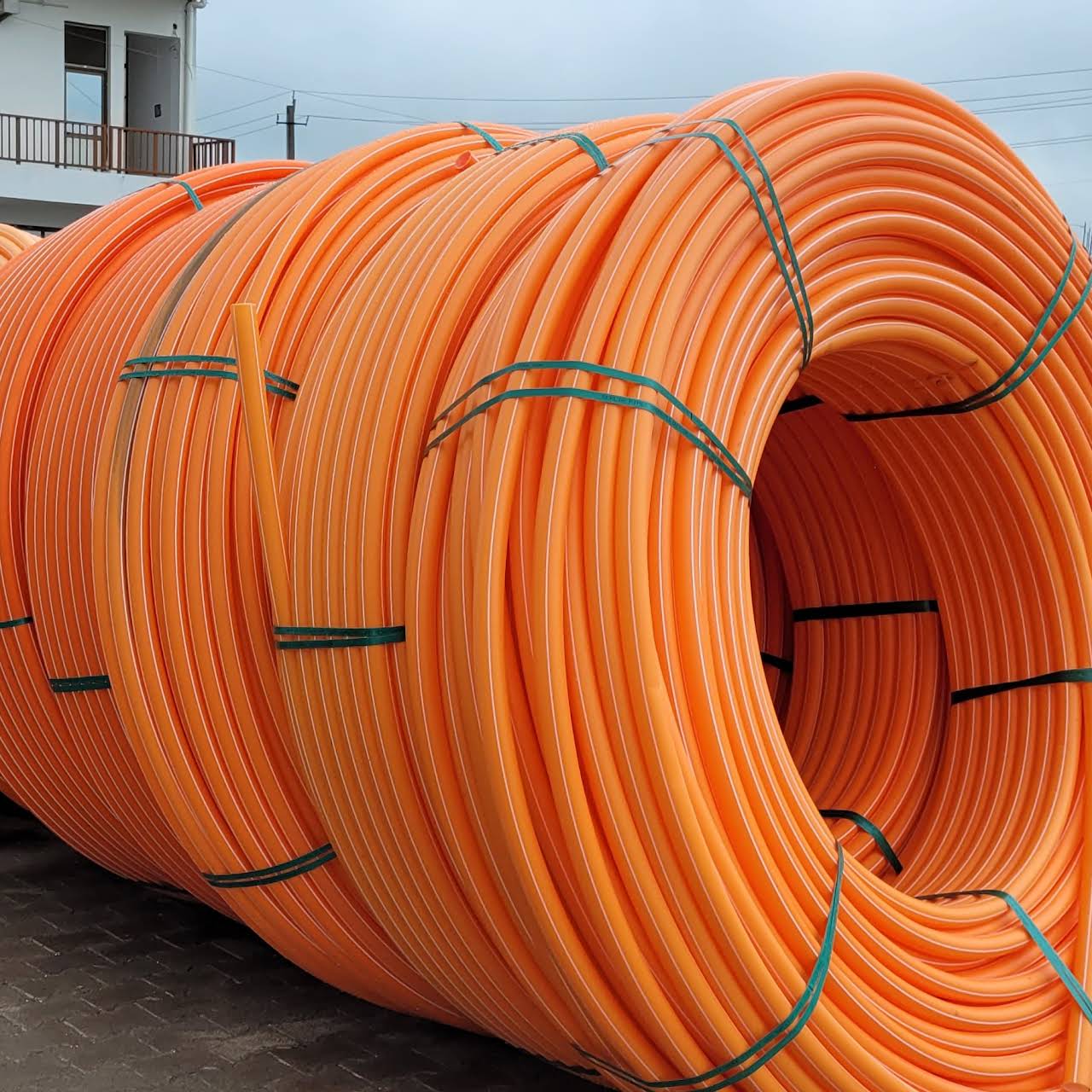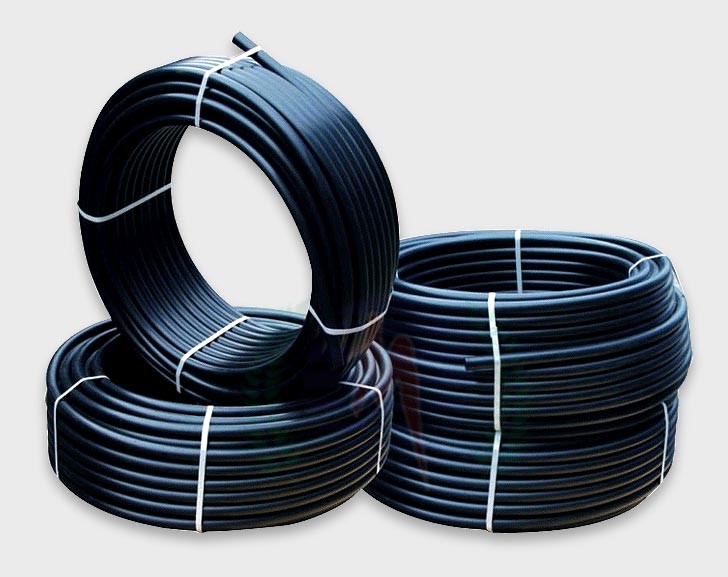Check Out the Production Refine Behind High-Quality HDPE Pipeline and Its Applications
The manufacturing process of top notch HDPE pipelines is complex and methodical. It begins with the choice of raw products that boost efficiency. Following this, ethylene undertakes polymerization to create material, which is after that formed via extrusion. Quality control is extremely important, making certain that the end product fulfills stringent requirements. The journey of HDPE pipelines doesn't finish with production. Their applications across various sectors reveal a broader relevance worth taking a look at.
Understanding HDPE: Characteristics and Advantages

High-density polyethylene (HDPE) is a flexible thermoplastic recognized for its resilience and resistance to different ecological elements. This product displays excellent tensile stamina, making it appropriate for demanding applications. Its low-density framework adds to a lightweight item, assisting in simplicity of managing and installation. HDPE likewise showcases amazing resistance to chemicals, which reduces degradation when revealed to harsh substances.
The product's reduced moisture absorption even more improves its longevity, making it excellent for usage in pipes and storage space tanks. Furthermore, HDPE is immune to ultraviolet (UV) radiation, making sure that products maintain their honesty also when revealed to sunshine. Moreover, its flexibility allows for the creation of intricate shapes without endangering toughness. The environmentally friendly nature of HDPE, usually originated from recycled products, adds to its allure, promoting lasting techniques in manufacturing. Overall, these buildings and benefits make HDPE a preferred selection for numerous industrial and consumer applications.
Basic Material Option for HDPE Manufacturing
The option of basic materials for HDPE manufacturing is necessary to verify the end product satisfies the desired requirements and top quality criteria. High-density polyethylene (HDPE) is largely created from polymerized ethylene, originated from nonrenewable fuel sources such as gas or petroleum. The top quality of these feedstocks significantly influences the mechanical and thermal residential properties of the last HDPE.
Ingredients also play a considerable function in boosting HDPE's performance, consisting of antioxidants, UV stabilizers, and colorants, which enhance sturdiness and resistance to ecological factors. The selection procedure need to consider not just the chemical composition of the raw materials however also their handling attributes to assure reliable manufacturing.
The sourcing of raw materials need to prioritize sustainability and conformity with ecological laws, as accountable methods are essential in today's market. Eventually, mindful basic material option lays the foundation for creating high-quality HDPE pipes ideal for varied applications.
The Extrusion Process: Forming HDPE Pipeline
The extrusion procedure plays an important duty fit HDPE pipes, starting with careful material prep work techniques that guarantee suitable flow and consistency. Similarly essential is the layout of the die, which directly affects the final measurements and surface quality of the pipeline. With each other, these aspects add considerably to the effectiveness and top quality of HDPE pipeline production.
Material Preparation Techniques
Reliable production of HDPE pipes starts with careful product preparation strategies, specifically the extrusion process. Throughout this stage, high-density polyethylene material is first dried out to eliminate dampness, ensuring perfect flow attributes. The resin is after that fed into the extruder, where it undergoes home heating and melting, transforming into a viscous state. This heating process is thoroughly regulated to maintain the product's honesty and performance. The molten HDPE is required through a die, forming it into a continual pipe kind. Appropriate temperature level administration throughout extrusion is essential, as it straight impacts the material's properties and the last item quality. As soon as shaped, the HDPE pipe is cooled and cut to defined sizes, all set for subsequent processing and applications.
Die Design Value
Accuracy in die style plays an important function in the extrusion process of HDPE pipelines. The die acts as the last shaping tool, directly influencing the pipe's dimensions, wall surface density, and surface finish. A well-designed die warranties consistent product flow, lowering flaws such as irregularities and vulnerable points. The geometry of the die have to be enhanced to fit the specific buildings of HDPE, including its viscosity and thermal behavior throughout extrusion. In addition, the cooling rate of the product as it goes through the die can noticeably affect the pipe's structural integrity. Investing in sophisticated die innovation is essential for suppliers intending to produce high-quality HDPE pipes that fulfill industry standards and customer assumptions.
Quality Assurance Procedures in HDPE Production
Although different variables influence the high quality of HDPE pipeline production, effective quality assurance procedures are vital to assure consistency and integrity in the end product. Trick quality assurance methods include strenuous product inspection, validating that the raw polyethylene meets well-known requirements for purity and thickness. Throughout the extrusion procedure, parameters such as temperature level, stress, and cooling time are closely kept an eye on to preserve dimensional accuracy and architectural integrity
Furthermore, post-production screening is vital; producers commonly conduct hydrostatic tests to evaluate the pipe's toughness and resistance to stress. Aesthetic assessments for surface area issues better boost quality control. Certification from pertinent requirements companies, like ASTM or ISO, provides an added layer of reputation. By executing these complete quality assurance steps, suppliers can minimize issues, improve efficiency, and make sure that the HDPE pipes satisfy the particular demands of numerous applications, inevitably causing customer contentment and count on the item.
Applications of HDPE Pipeline Across Industries
HDPE pipes are used across numerous markets as a result of their sturdiness and flexibility. In water circulation systems, they assure effective distribution, while in wastewater monitoring, they give why not look here reliable solutions for waste transport. Furthermore, agricultural watering networks profit from HDPE's resistance to corrosion and flexibility, making it a perfect selection for modern farming methods.

Water Circulation Solutions
A considerable number of markets rely on high-density polyethylene (HDPE) pipelines for effective water circulation systems. Understood for their sturdiness and resistance to deterioration, HDPE pipelines are widely used in community water networks, farming watering, and industrial applications. Their light-weight nature assists in very easy handling and installment, minimizing labor expenses and time. Furthermore, HDPE pipes can accommodate various stress degrees, making them ideal for both low and high-pressure systems. Texas hdpe pipe manufacturer. The versatility of the product enables smooth assimilation into existing facilities, minimizing the need for comprehensive excavation. In addition, HDPE's resistance to chemical leaching warranties that the water delivered remains risk-free official website and clean, making it an excellent choice for keeping the high quality of drinkable water across different fields
Wastewater Administration Solutions
Efficient water distribution systems likewise lead the way for innovative wastewater administration remedies, where high-density polyethylene (HDPE) pipes play a significant role. Renowned for their sturdiness and resistance to rust, HDPE pipes are optimal for transferring wastewater in different setups. Their flexibility enables easy installment in complicated environments, reducing the demand for considerable excavation. Additionally, HDPE's smooth interior surface reduces rubbing, improving flow rates and efficiency. These pipelines are additionally immune to chemical leaching, making certain that impurities do not jeopardize the surrounding setting. Industries, districts, and therapy facilities significantly count on HDPE pipes for their dependability and longevity, making them a recommended selection for contemporary wastewater administration systems. This adaptability emphasizes the vital importance of HDPE pipelines throughout numerous applications.
Agricultural Irrigation Networks
Agricultural irrigation networks profit significantly from using high-density polyethylene (HDPE) pipes, which offer efficient and reputable water delivery to crops. HDPE pipelines are light-weight, making them very easy to transfer and install, while their adaptability enables numerous setups in varied terrains. These pipelines demonstrate excellent resistance to rust, chemicals, and UV radiation, making certain sturdiness in severe agricultural environments. Additionally, their smooth interior surface lessens friction loss, maximizing water flow and reducing energy expenses related to pumping. The longevity of HDPE pipelines, frequently surpassing half a century, adds to lower upkeep and replacement costs. Farmers progressively rely on HDPE pipelines to boost watering performance and advertise lasting farming techniques, ultimately leading to boosted crop yields and resource conservation.

Future Patterns in HDPE Pipeline Innovation
As the demand for lasting and effective framework grows, improvements in HDPE pipe innovation are positioned to change numerous sectors. Arising fads include the assimilation of smart technologies, such as sensors and IoT capabilities, which promote real-time surveillance of pipe problems, reducing upkeep costs and protecting against leakages. Furthermore, the advancement of innovative production strategies, such as 3D repipe company printing, is allowing the production of complex, tailored pipeline styles that cater to particular job requirements.
The emphasis on recycling and round economy techniques is driving the innovation of HDPE pipes made from recycled products, enhancing sustainability. Enhanced jointing approaches, such as electro-fusion and mechanical fittings, are likewise enhancing installment efficiency and integrity. Lastly, the growing focus on environmental guidelines is pressing producers to adopt greener production processes, ensuring that HDPE pipelines not only satisfy market standards however also foster an even more lasting future for infrastructure growth.
Regularly Asked Concerns
Just How Does HDPE Contrast to Various Other Plastic Materials?
HDPE exceeds several other plastic products regarding longevity, chemical resistance, and adaptability. Its low thickness and high tensile stamina make it optimal for various applications, frequently surpassing choices in both efficiency and longevity.
What Are the Environmental Effects of HDPE Production?
The environmental effects of HDPE production include greenhouse gas discharges, power consumption, and possible air pollution from making procedures. Furthermore, inappropriate disposal can bring about soil and water contamination, increasing problems about long-lasting eco-friendly results.
Can HDPE Piping Be Recycled?
Yes, HDPE pipelines can be reused. Several facilities approve utilized HDPE for handling, transforming it right into new products. This reusing adds to sustainability initiatives, minimizing plastic waste while preserving resources and energy in the manufacturing cycle.
What Is the Lifespan of HDPE Piping?

Just How Do Temperature Level Variations Influence HDPE Pipe Efficiency?
Temperature level variants significantly impact HDPE pipeline efficiency, impacting flexibility and toughness. Heats can bring about softening, while reduced temperature levels might trigger brittleness, inevitably affecting the pipe's durability and viability for different applications in varied settings.